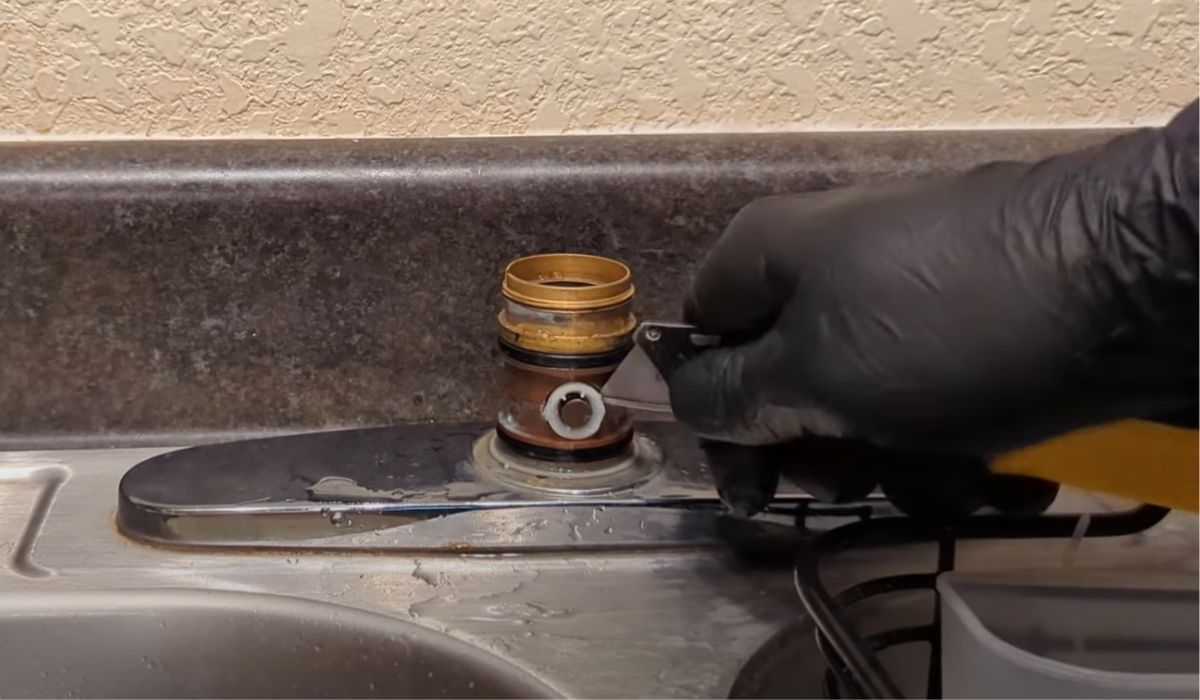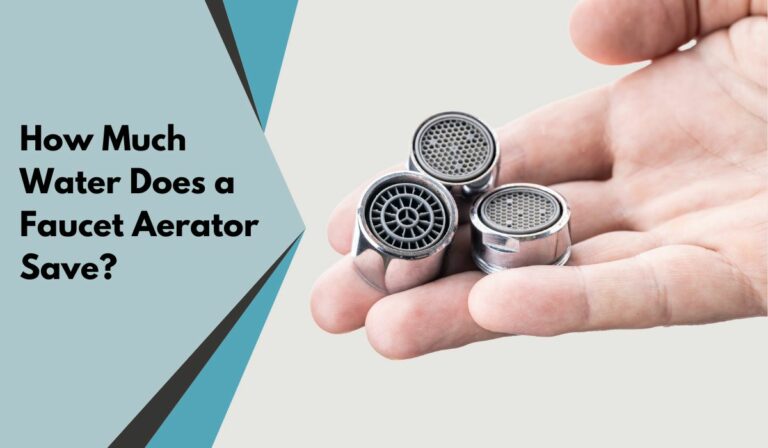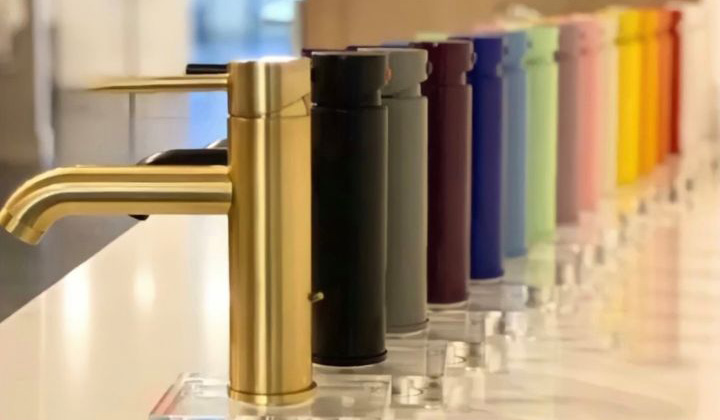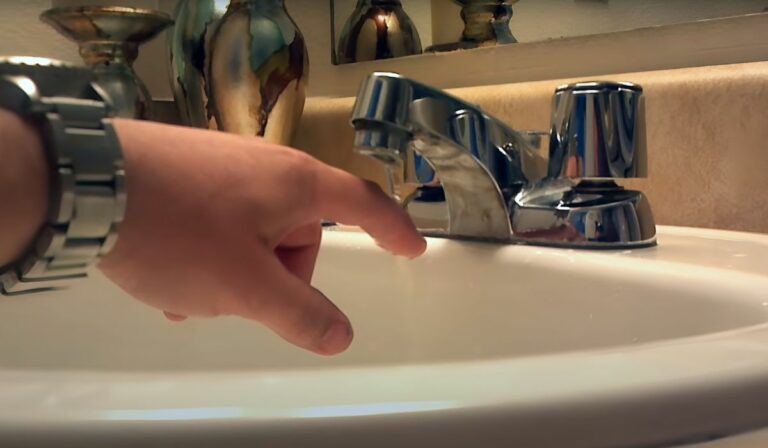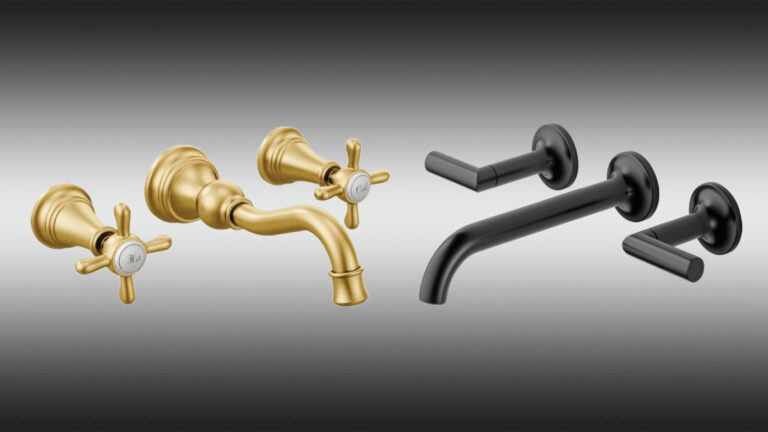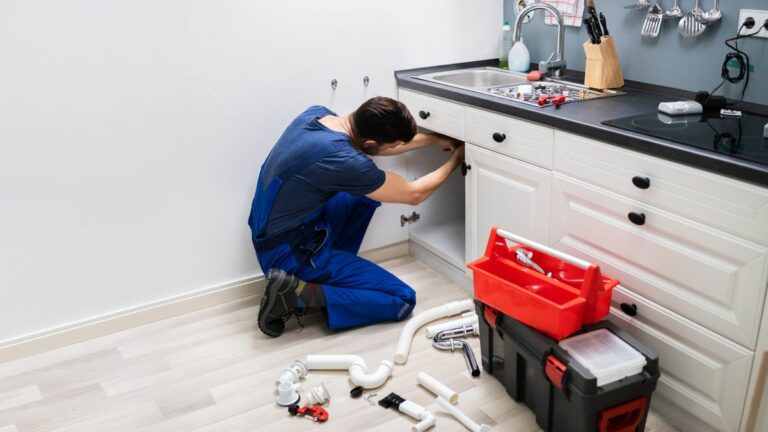Your Kitchen Faucet Diverter Is Stuck – What to Do Next?
So your kitchen faucet, more specifically the diverter, has decided to act up. It’s stuck! And you don’t know what to do next.
When the kitchen faucet diverter is stuck, it often leads to low water pressure, improper water flow, and malfunction of the sprayer hose. The most common culprit is a clogged diverter.
Thankfully, it is a situation you can try to fix.
In this guide, I am going to break down the common signs and reasons behind a stuck kitchen faucet diverter, along with guidance on how you can unclog and fix this issue. Let’s Go!
Signs that the Kitchen Faucet Diverter Is Stuck
If you already know how a kitchen faucet diverter works, you’ll also understand that this part is actually responsible for redirecting water toward the spout from the sprayer.
A kitchen faucet diverter works once it gets triggered by the sprayer button. The water pressure instantly starts to drop and that engages the diverter. This leads to restricting the water flow at the faucet spout. While the water moves to the sprayer part.
Any of the parts of a faucet may cause the issue that you are facing. How do you know if your kitchen faucet diverter is bad? Well, a few signs will help you to ensure the fault lies within the diverter.
The most common signs that signal that the kitchen faucet diverter has gone bad are unexplainable low pressure, inconsistent water flow, the kitchen sprayer hose being stuck, and trouble switching between the spray head and sink spout.
Also, notice if multiple spray functions are working at the same time. In that case, it’s quite obvious the diverter has failed to divert to the right spray mode.
Common Causes of a Kitchen Faucet Diverter Getting Stuck:
On that note, can a stuck kitchen faucet diverter cause water damage? It very well can!
A stuck kitchen faucet diverter will cause water damage and wastage along with leading other faucet parts to malfunction. If the stuck diverter results in a leak then the water will flow out of the spout and drain directly unused.
So what is the solution to this problem, and eventually can you repair a diverter?
You might be able to repair a diverter if the cause behind it is fixable. However, if the diverter is poorly damaged then replacement will be the only choice.
Exactly How Do You Fix a Kitchen Faucet Diverter?
The most accessible repair is to unclog the diverter. Of course, you need to know how to clean a kitchen faucet diverter without causing further harm.
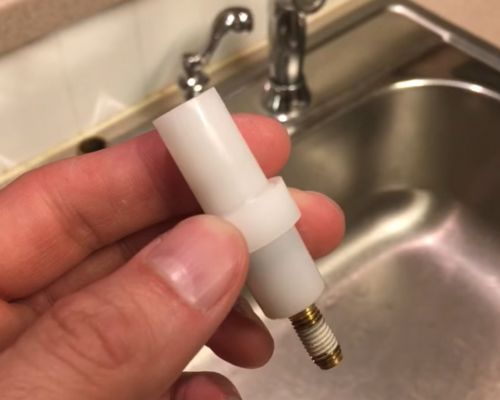
Also, this will need basic tools that are easily available at home. One of the best DIY fixes for a stuck kitchen faucet diverter is using white vinegar.
Disconnect the Water Supply Line
There is a hot and cold water supply valve available underneath the sink. You must rotate it clockwise to disconnect the water supply. Make sure to turn the faucet on and check if the disconnection was successful.
Access the Faucet Cap
In a two-handle faucet, you will find the cap behind the spout. However, to access the cap in a single-handle faucet, you must first find the small set screw. This is usually located near the handle base.
Use a Phillips screwdriver to loosen the screw, allowing you to raise the handle. Underneath, you will find the faucet cap. Use any regular rag to place it over the cap behind the spout.
Accessing the Diverter
For a two-handle faucet, you can simply use a tongue and groove plier to remove the cap. Just rotate it counterclockwise and you will be able to expose the diverter.
However, with a single-handle faucet, you need to go through the cam, packing, and ball assembly first. By removing the cap, you will be able to lift the cap. After which, you can also lift off the packing and ball assembly from the body.
Next, hold the spout with a gentle hand and rotate it back and forth. You want to put upward pressure and it will come off from the faucet body. After taking out the spout, you will find the diverter right at the front of the faucet body.
Remove the Diverter
With a single-handle faucet, you need to apply pressure on the back of the diverter. Use a flathead screwdriver for this. Insert it into the faucet body behind the diverter. And you will be able to pop out the diverter from the body.
For a double-handle faucet, use a nickel or a butter knife. Please insert it into the slot available at the top of the diverter. You want to rotate in a counterclockwise direction. And this shall release the diverter from the body.
Soaking the Diverter
Mix a quarter cup of white vinegar and the same portion of water to create a DIY soaking agent for the diverter. Leave it for at least two hours. After taking it out, wipe and get rid of any access.
Placing the Diverter Back
For a single-handle faucet, you can simply snap the diverter back to the faucet body. Consider replacing the spout, ball assembly, and packing if those are worn out. Then tighten the set screw in place to reinstall the faucet handle.
For a double-handle faucet, you can go with thread-seal tape over the threads of the diverter. One or two layers would be ideal. Once done, snap back the diverter into the body of the faucet using a nickel or butter knife. You can replace the faucet cap if it looks faulty.
Don’t forget to connect the supply valve handles to revive the water supply.
The situation should go back to normal. However, if it does not, then you may need to consider changing it. Replacing a stuck kitchen faucet diverter is only necessary if the part is completely damaged.
Also, if the diverter looks quite worn out, then even with the accessibility to repair it, you should consider changing the part.
Wrapping Up
So these are a few things that can help you when your kitchen faucet diverter gets stuck. I would highly encourage you to clean the diverter and try to fix the problem yourself. It may also end up requiring a replacement of the diverter.
However, if you have tried these and still can’t make a way out, the issue might be something else. Unless you have quite a bit of plumbing skills, it’s best to consult with a professional and perhaps ask them to give your faucet a check.
That’s It For Today! See You Next Time, Bye!

